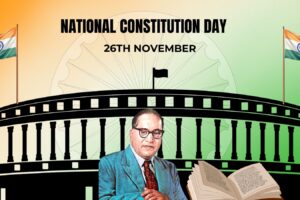
Operation Polo: The Military Annexation of Hyderabad by India | TM Special
Hyderabad, the capital city of Telangana, is known for its rich culture, heritage, and cuisine. But did you know that Hyderabad was once a princely state that resisted joining the Indian Union after independence in 1947?
What was Hyderabad State?
Hyderabad State was one of the largest and wealthiest princely states in India. Hyderabad State was ruled by the Nizam, a hereditary Muslim monarch who traced his lineage to the Mughal Empire. The Nizam was also known as Asaf Jah VII, and his full name was Mir Osman Ali Khan. He was one of the richest men in the world at that time, with an estimated fortune of $2 billion.
The Nizam had a complex relationship with the British Raj. On one hand, he accepted the British as his suzerain and paid them an annual tribute. On the other hand, he enjoyed a high degree of autonomy and maintained his own army, currency, postal system, and foreign policy. He also resisted the British attempts to interfere in his internal affairs and reforms.
Why did Hyderabad want to remain independent?
When India gained independence from the British on August 15, 1947, it was divided into two dominions: India and Pakistan. The princely states, which were not directly ruled by the British but had treaties with them, were given three options: join India, join Pakistan, or remain independent. Most of the princely states chose to join either India or Pakistan, but a few opted for independence. One of them was Hyderabad.
The Nizam of Hyderabad wanted to preserve his sovereignty and status as a constitutional monarch within the Commonwealth of Nations. He hoped to maintain friendly relations with both India and Pakistan, and to secure international recognition for his state. He also feared that joining India would mean losing his power and wealth to the Indian government and the Hindu majority.
However, his decision to remain independent faced several challenges. First, Hyderabad was landlocked and surrounded by Indian territory on all sides. This made it difficult for him to communicate and trade with other countries. Second, Hyderabad had a large Hindu population that was unhappy with the Nizam’s rule and demanded more rights and representation. Third, Hyderabad witnessed a violent peasant uprising known as the Telangana Rebellion, which aimed to overthrow the feudal system and establish a communist state. Fourth, Hyderabad faced a militant Muslim group called the Razakars, which supported the Nizam’s independence but also committed atrocities against Hindus and other minorities.
What was Operation Polo?
Operation Polo was the code name for the military operation launched by the Indian Armed Forces against Hyderabad State in September 1948. It was also called a “police action” by the Indian government to avoid international criticism.
The main reasons for Operation Polo were:
- To end the violence and lawlessness in Hyderabad caused by the Razakars and other armed groups.
- To protect the lives and property of the people of Hyderabad, especially the Hindus who were targeted by communal riots.
- To prevent Hyderabad from becoming a base for Pakistan or other hostile forces.
- To integrate Hyderabad into the Indian Union as per the wishes of its majority population.
Sardar Vallabhai Patel gave the order for Operation Polo began on September 13, 1948, when Indian troops crossed into Hyderabad from four directions: north, south, east, and west. The Indian Army was led by Major General J.N. Chaudhuri, while the Indian Air Force was commanded by Air Vice Marshal S.Mukherjee. The Indian forces faced little resistance from the Hyderabadi army, which was poorly trained and equipped. The Razakars also proved to be ineffective against the superior Indian firepower.
The operation lasted for five days, during which most of Hyderabad’s territory was captured by India. The Nizam surrendered on September 17, 1948, and signed an instrument of accession on September 18, 1948. He agreed to join India as a constituent state with full autonomy within its own boundaries. He also retained his title and privileges as a ceremonial head of state.
Operation Polo resulted in:
- The annexation of Hyderabad State into the Indian Union.
- The end of the Nizam’s rule and the establishment of democracy in Hyderabad.
- The suppression of the Telangana Rebellion and the Razakar movement.
- The restoration of peace and order in Hyderabad.
- The integration of Hyderabad’s culture, economy, and society with the rest of India.
How is Operation Polo related to the Liberation of Hyderabad?
Operation Polo is considered as the final and decisive step in the liberation of Hyderabad from the Nizam’s rule. It marked the end of a long and turbulent struggle for freedom and democracy in Hyderabad. It also paved the way for the development and progress of Hyderabad as a part of India.
The liberation of Hyderabad is celebrated by some people as a day of pride and joy, while others view it as a day of sorrow and loss. It is also a source of controversy and debate, as some people question the legality and morality of Operation Polo, while others defend it as a necessary and justified action.
The liberation of Hyderabad is not an official holiday in India, but it is observed by some state governments, political parties, and civil society groups on September 17. It is also called Hyderabad Liberation Day or Telangana Liberation Day by some people.
Operation Polo was a significant event in India’s post-independence history. It was a result of a complex political, social, and military situation that involved various actors and interests. It was also a source of both triumph and tragedy for the people of Hyderabad. Today, Hyderabad is one of the most vibrant and cosmopolitan cities in India, with a rich legacy of culture, diversity, and development
Also Read
Telangana Formation Day: Celebrating History and Unity | TM Special
Sir M Visvesvaraya: The Engineer-Statesman Who Made Modern India
Tag:History, Hyderabad, IAS, IFS, India, IPS, IRS, National Personality, Sardar Vallabhai Patel, UPSC



